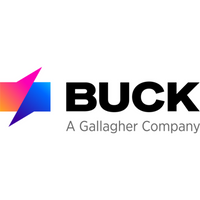How to ensure your employees value your reward package

Despite knowing this, a lot of organisations are missing the mark when they communicate their total reward to employees, meaning reward isn’t driving the results it should be.
Effective communication is the golden ticket when it comes to increasing employee engagement with total reward. As well as ensuring your employees understand each element of their reward package and what it means for them, communicating the value of your total reward package is also vital.
Why communicate reward value?
Eight in 10 employees underestimate the value of their total reward by up to 30%. Often, this is because communication around an employee’s incentives is too broad and doesn’t involve relatable real-life examples. This opens up room for misunderstanding and results in low uptake.
It’s vital employees understand their total reward, but this is only the first piece of the puzzle in your reward communication. For example, more than two thirds (70%) of employers attribute poor reward uptake and high employee turnover to employees’ lack of understanding and valuing of their total reward package.
In addition, only 7% of global HR professionals are consistently achieving their benefits plan objectives, with the majority held back as a result of employees not valuing what’s being offered to them.
So, how do you ensure employees not only understand what you’re offering but value their reward package too?
Effectively communicating reward value
Historically, many companies have relied on total reward statements to demonstrate value to their employees. However, this usually puts focus on the monetary value of their incentives, which though important doesn’t cover everything that makes up a total reward package.
Today, both candidates and employees have access to a far wider range of employers, and in our fast-paced, digital world recruiters can reach out to your employees 24/7. With competition among companies for the best talent being so fierce, it’s never been more crucial for employers to invest time in educating their teams about the true value of their reward.
There’s more to the value of workplace rewards than 1, 2, 3
Total reward statements tend to be delivered as a series of numbers including salary, bonuses and the overall financial value of their benefits. The perceived value of benefits increases by over 20% if employees receive total reward statements. So, while financially-focused reward statements are necessary, on their own they’re not enough to demonstrate full reward value.
Reward isn’t just about numbers, it’s also about emotion. Research has shown employees place value on three things above anything else: money, choice and time. They want to know about more than their financial remuneration. They want to know about opportunities for growth and how taking their role will benefit their personal life; and about company culture, among a multitude of other things that make for a rewarding career.
By communicating your reward in a way that focuses on employees’ needs, hopes, and desires – and actively addressing these needs in reward communication – the full value of reward becomes clearer and more tangible.
Communication must be aligned and holistic
Within a large organisation, there will likely be a person or team responsible for benefits, then another for shares, another for compensation, and perhaps an entirely different group responsible for pensions. If these individuals and teams don’t all communicate with each other, employees might easily end up confused by a total reward package that appears disjointed.
It’s not enough to expect people to join the dots on their own, you have to show them how the whole package fits together.
As humans we communicate using narrative, therefore it makes sense that your teams would respond to a holistic approach to reward communication that places them and their lives at the centre.
An attendee at a reward communication focus group once told us that they had spent months negotiating with their employer for a higher salary. They only saw value in the numbers because they didn’t understand all of the other elements that made up their reward package. They said that if this had been communicated, and they were made aware of their value, then they wouldn’t have negotiated nearly so hard.
People generally want to feel that their needs are being addressed and met within their reward package, not forced to jump through hoops to uncover value for themselves.
Ensure employees don’t underestimate what you’re offering
When employees underestimate the full value of their reward package, they’re more likely to be poached by competitors.
If strategic reward communication is lacking, and employees don’t have the full picture of their reward package value, a competitor offering a higher salary can be very attractive. The employee might only consider the value of the salary, even if their current total reward package exceeds this. This is why it’s crucial that the value of an employee’s reward package is clearly visible and accessible.
One size doesn’t fit all when it comes to communication
Employers that take a ‘one-size-fits-all’ approach to reward communication – such as using a total reward statement template for all employees – are missing out on many opportunities to engage and inspire their teams.
Simply putting everything into a written, finance-centred document lacks the relatable nuances that pull the package together on an emotional level. Instead, look at how you can use tangible examples of the value the rewards provide, explained in real-world terms.
Effective reward communication that centres on value is vital for retaining talent, engaging your team with their reward package, and improving employee sentiment and motivation.
The author is Chris Andrew, strategy director at Caburn Hope (part of the Buck family).
This article is provided by Caburn Hope.
In partnership with Buck
Buck is a global, integrated HR consulting, benefits administration & technology services provider.







